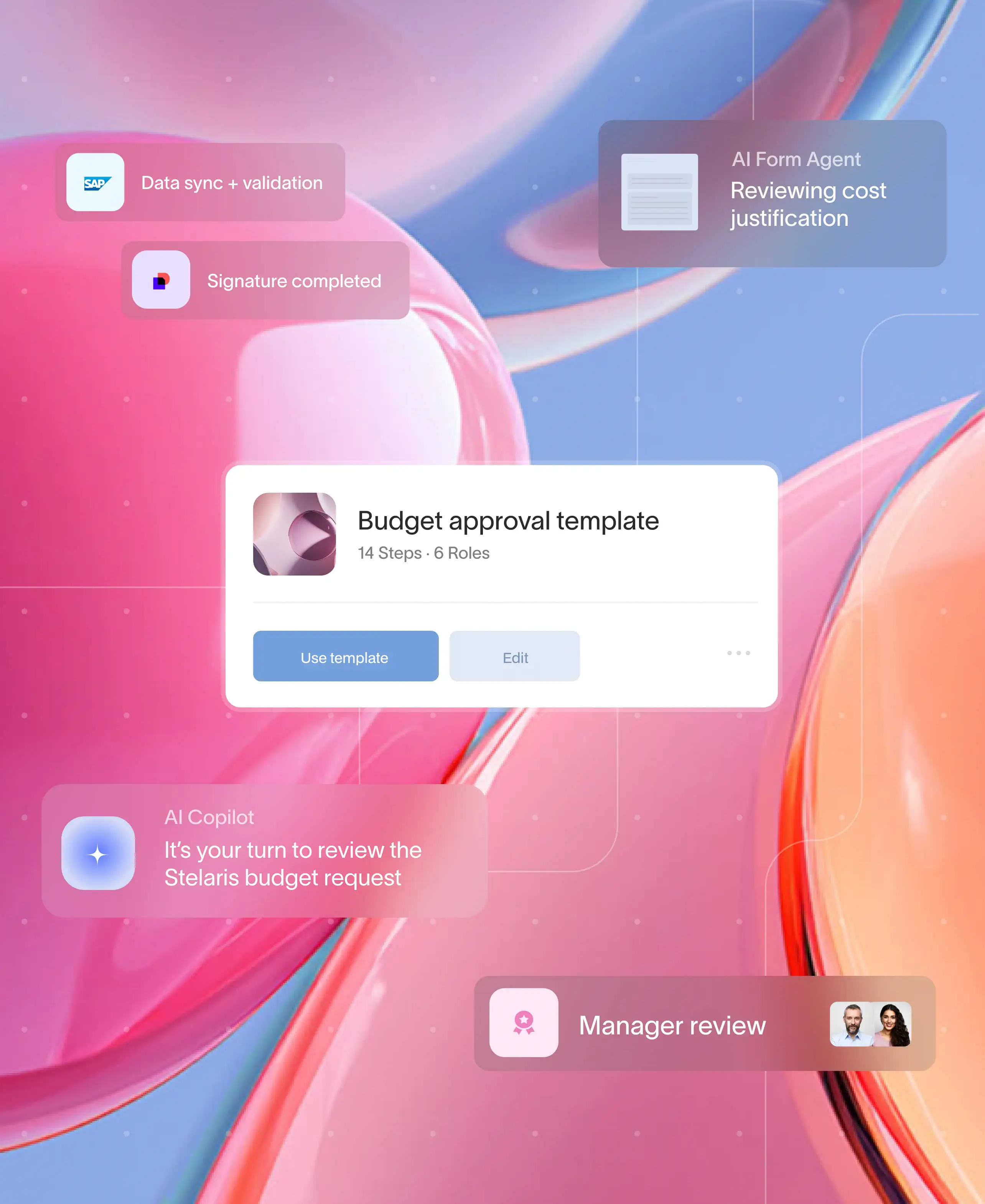%20(1).png)
Are you constantly juggling various client projects, feeling overwhelmed by unpredictable workloads and inconsistent revenue streams? If so, it might be time to consider productizing your services.
In this blog post, we will understand what is a productized service, their benefits, and how you can effectively implement them in your business. We'll also discuss who can benefit from this model and provide contextual examples. By the end of this post, you'll have a clear understanding of how productizing services can streamline your operations and boost your profitability.
What is a productized service?
A productized service is a predefined, standardized service offering that is packaged and sold like a product. Unlike traditional service models, where each client engagement is customized and tailored, productized services are repeatable and scalable. This approach of selling services allows businesses to deliver standardized value while reducing the complexities and inefficiencies associated with bespoke services.
For instance, rather than providing tailored web development solutions for individual clients, a consulting firm could offer a standardized service package that includes a set website with fixed features, timelines, and costs. This approach enables the firm to optimize its operations, ensure consistent results, and concentrate on promoting and offering a distinct service.
The benefits of productizing services
Implementing productized services offers several advantages that can significantly enhance your business operations, including:
- Increased profit margins: By productizing services, businesses can reduce operational costs and improve their profitability. With set processes and predictable outcomes, expenses can be better managed, leading to enhanced margins.
- Easier to scale: One of the most important benefits of productizing services offers is scalability. With established frameworks and processes, businesses can replicate their offerings without significant increases in workload, enabling growth with minimal additional investment. This scalability allows you to handle more clients simultaneously, increasing your capacity and revenue potential.
- Increased predictability: With predefined service packages, businesses can achieve greater predictability in revenue streams and resource allocation. This stability helps in planning and forecasting, ultimately leading to better financial health.
- Greater customer satisfaction: By providing consistent quality and clear expectations through standardized offerings, clients are more likely to be satisfied with their experiences. This satisfaction fosters loyalty and can lead to increased referrals.
- Improved quality control: Standardization allows for enhanced quality control as teams can implement best practices and ensure that each service delivered meets the same high standards, reducing variability.
- Increased efficiency: By automating repeatable tasks and utilizing a streamlined approach, businesses can significantly improve efficiency. This leads to quicker turnaround times and allows teams to focus on higher-value activities, driving the overall productivity of the organization.
Different types of productized service models
There are various types of productized service models that businesses can implement based on their specific needs and goals. Some common examples include:
- One-time projects
- Subscription-based projects
- DIY kits or templates
- Tiered Services
- Customizable packages
- Pay-per-use services
- Consultation based services
One-time projects
A productized service business model with a one-time project deal involves delivering a specific service or solution within a defined timeframe. For example, a graphic design agency might offer a logo design package that includes a set number of revisions and a final deliverable. This model is ideal for businesses that provide tangible, one-off deliverables.
Subscription-based services
Subscription-based productized services involve offering ongoing support or maintenance for a recurring fee. For instance, a marketing agency might provide monthly social media management services, including content creation, scheduling, and performance tracking. This model ensures a steady stream of revenue and fosters long-term client relationships.
DIY kits or templates
DIY kits or templates empower clients to perform certain tasks themselves using pre-designed resources. For example, a web development company might offer website templates that clients can purchase and customize according to their needs. This model provides clients with a cost-effective solution while minimizing the need for extensive support or customization.
Tiered services
This model offers a range of services at different price points, giving clients the option to choose the level that best fits their budget and requirements.
Bundled services
In this model, businesses package several services together at a discounted rate, making it more affordable for clients to purchase multiple services at once.
Customizable packages
This model allows clients to choose from a menu of options to create a customized package that meets their specific needs. This can be a great option for clients who have unique or specialized requirements.
Pay-per-use services
With this model, clients only pay for the services they actually use. This can be beneficial for businesses with fluctuating service demands or for clients who are unsure of their ongoing needs.
Consultation-based services
This model offers one-on-one consultations where clients can receive personalized advice and solutions from experts in their field. This type of service is often used by professionals such as lawyers, accountants, and consultants.
How to productize a service
Productizing a service involves a strategic approach to creating an offering that meets market demands while allowing for scalability and efficiency. Here are the key steps to effectively productize your services:
- Identify your core offering: Start by identifying the core service or solution that you want to productize. Consider your areas of expertise, market demand, and the unique value you can provide. Focus on services that can be standardized and delivered consistently to multiple clients.
- Understand your clients’ needs: Conduct thorough research to gain insights into your clients' pain points and expectations. Understanding their needs will enable you to design a service that provides genuine value and addresses their specific challenges.
- Set yourself apart: Determine what makes your offering unique in the marketplace. Whether it’s through exceptional service quality, innovative features, or competitive pricing, highlighting your unique selling proposition will differentiate you from competitors.
- Define the scope and deliverables: Clearly define the scope of your productized service, including the specific deliverables, timelines, and pricing. Outline the key features and benefits that differentiate your offering from competitors. By setting clear expectations, you can ensure a smooth and transparent client experience.
- Streamline processes and systems: To maximize efficiency, streamline your processes and systems. Develop standardized workflows, templates, and tools that can be easily replicated for each client. Automate repetitive tasks wherever possible to reduce manual effort and improve productivity.
- Create a marketing strategy: Develop a comprehensive marketing strategy to promote your productized service. Highlight the unique value proposition, benefits, and success stories to attract potential clients. Leverage digital marketing channels such as social media, content marketing, and email campaigns to reach your target audience effectively.
- Review your metrics: Analyze your current performance metrics to understand trends, client satisfaction, and areas for improvement. This data will inform your decisions as you transition to a productized service model.
- Test your setup and optimize your flow: Once you’ve developed your productized service, implement a testing phase to evaluate its effectiveness. Gather feedback, assess performance, and make adjustments as needed to streamline your processes and improve the overall offering. Continuous optimization will ensure that your service remains relevant and effective in a changing market.
Who can productize services?
Productizing services is not limited to a specific industry or business size. Any service-based business can benefit from this model, whether you are a freelancer, small agency, or large corporation.
Freelancers and consultants
Freelancers and consultants can benefit greatly from productizing their services. By offering predefined packages, they can streamline their operations, attract more clients, and achieve higher profitability. For example, a freelance copywriter might create a productized service offering blog post writing with a fixed word count and delivery timeline.
Small and medium-sized businesses
Small and medium-sized businesses can leverage productized services to scale their operations and improve efficiency. By standardizing their offerings, they can handle more clients simultaneously, reduce operational costs, and increase revenue. This model is particularly beneficial for businesses in industries such as marketing, design, and software development.
Agencies and service providers
Agencies and service providers can enhance their service delivery and profitability by adopting a productized service model. By creating standardized packages, they can streamline project management, improve client satisfaction, and achieve higher profit margins. For instance, a digital marketing agency might offer predefined SEO packages with specific deliverables and timelines.
Conclusion
Productizing services is a game-changer for businesses seeking consistency, scalability, and higher profit margins. By creating standardized service packages, businesses can streamline operations, attract more clients, increase profitability, and achieve long-term success. Whether you're a freelancer, small business, or agency, the benefits of productized services are undeniable.
In a nutshell, productized services serve as a valuable asset in today's competitive market. By delivering clear, standardized offerings, businesses can differentiate themselves and establish expertise. Don't hesitate – integrate productized services into your business strategy today to stand out and succeed.
FAQs
What is a productized service?
A productized service is a predefined, standardized service offering packaged and sold like a product. Unlike traditional service models, where each client engagement is customized, productized services are repeatable and scalable.
How do I productize a service?
To productize a service, start by identifying your core offering, defining the scope and deliverables, streamlining processes and systems, and creating a marketing strategy. Focus on services that can be standardized and delivered consistently to multiple clients.
Who can benefit from productized services?
Freelancers, small and medium-sized businesses, and agencies can all benefit from productizing their services. By standardizing their offerings, they can streamline operations, attract more clients, and achieve higher profitability.
What are the benefits of productized services?
The benefits of productized services include consistency and predictability, scalability and efficiency, and higher profit margins. By standardizing offerings, businesses can deliver consistent value, handle more clients simultaneously, and improve overall profitability.





